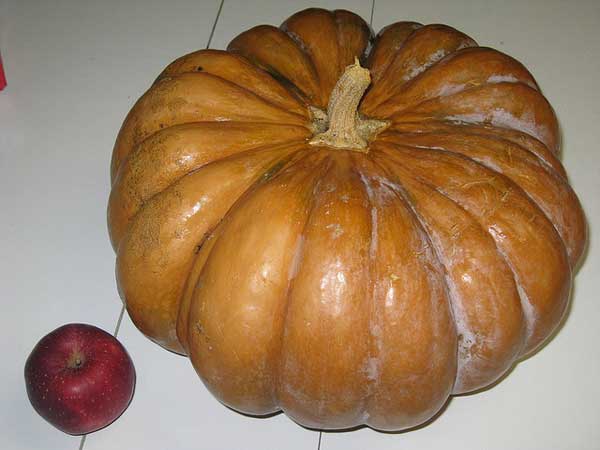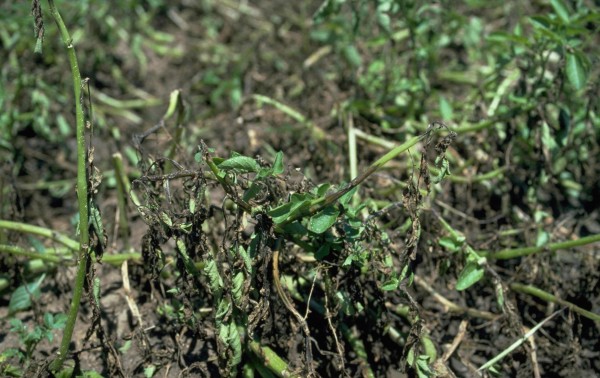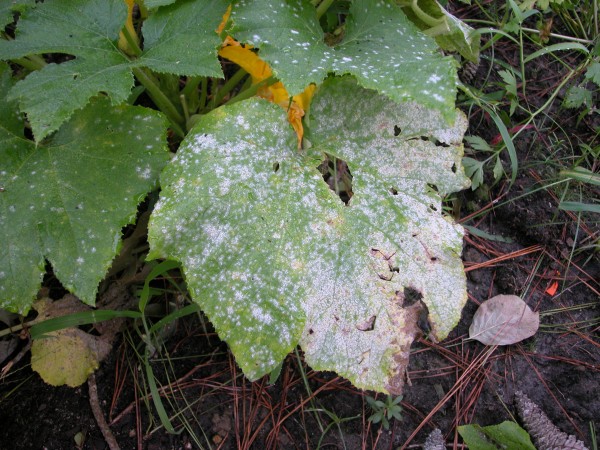-

Erin Donahue -

Christina Barkanic -

Brittany Trott -

Emily Wiley -

Jessica Reilley -

Chris Raines -

Will Nichols -

Emily Reddy -

Michele Marchetti -

Michele Frank -

James Gherardi -

Kit Henshaw -

Christina and Erin -

Kim Tait -

Erin McKinney -

Steve Spanelli -

Sam Komlenic -

Katherine Taylor Grofic -

James Eisenstein -

Jamie Oberdick -

Anna Lombardo -

LacCreta Holland -

Tony Ricci -

Local Food Journey -

Laura Young -

Kristin Camplese -

Harrison's Fresh + Local -

Danielle Matalonis -

Kristine A. -

Linda Weaver -

Naomi Elle Schwartz -

Dana Stuchul -

Cara McShane -

Brittany Smith -

Jessica Illuzzi - Frosty
-

Jessica Paholsky -

James Sechrengost -

Brad Yeckley -

Maya Althouse -

Jordan Reabold -

Kim Chase -

Maria Bryant - Alexandrea Scott
How to deal with two devastating late-season garden fungal diseases
Posted by Jamie Oberdick on 08/25, 2014 at 07:49 AM

To get pumpkins like this one, you need to manage powdery mildew.
As we wind down a summer that will go in the weather record books as one of the top five wettest summers in the 119-year history of weather records at State College, gardeners face a late-season challenge to their plots. Along with all that rain, we’ve had a cool but humid summer. These are just about perfect conditions for all sorts of garden fungal diseases to lay waste to your remaining garden season.
There are plenty of fungal diseases that can lay a hurt on your home garden production, but I am going to focus on two common and particularly destructive plant illnesses, late blight and powdery mildew.
First off, there’s the bane of tomato and potato growers everywhere, late blight. If you recall, one of the worst years on record for late blight was 2009, when entire fields of tomato plants were totally wiped out in days. The infamous Potato Famine in Ireland in the mid-19th Century was caused by late blight. There are different versions of the late blight pathogen that infects either potatoes or tomatoes or both, but they all have the same basic symptoms.
The first sign that many gardeners notice is a distinct brownish splotch on a leaf. If conditions are humid, the underside of the leave will have a fuzzy white spot directly behind the brown splotch.

Blight spot on potato leaf. Photo by Howard F. Schwartz, Colorado State University via Creative Commons
As the disease progresses, the spots expand, rapidly if conditions are humid or wet. Lesions will appear on stems and eventually, greenish-brown, greasy-appearing spots appear on fruit.
The best defense for late-blight, even this time of year, is prevention. Do not water plants using sprinklers that wet the foliage, and water in the morning allowing the plants to dry off. Make sure there is good enough air circulation by removing lower leaves and weeds. It’s also a good idea to mulch around the plant base so the disease doesn’t splash up on leaves during a rain (spores often are present in the soil, and make sure all tomato branches are staked to keep them off the ground. Using a fungicide is also recommended.
Be sure to do a once-over daily of garden plants to look for signs, keeping in mind infected plants may take five days to show signs, especially if we get a dry spell. If the plants are severely infected, the only solution is to remove and destroy the plant, discarding in a garbage bag. This is also an ethical step as you do not want your garden to be a source of blight spores that infect neighboring farms and gardens.

Plant with severe late blight infection.
Finally, take two steps to prevent blight next year. Be sure to clear all plant debris from infected area as spores can overwinter in plant matter, and plant your tomatoes in a different spot. Also, next year be sure to destroy and “volunteer” plants that sprout up from either missed potatoes and tomatoes.
Powdery mildew is another fungal disease but this one infects a wide range of plants. It often makes its initial appearance on lilac bushes or on broad-leaf plantain.
Powdery mildew is quite easy to spot, as it gives leaves the appearance being sprinkled with talcum powder. The disease starts out as just spots, then covers the leaf almost completely. In the image below, the leaf in the foreground has powdery mildew while the leaves just behind have the early spots.
The disease hits a fair amount of plants but for this post, we’ll look how it infects curcubits, which includes squashes, pumpkins, gourds, cucumbers, etc. If left unmanaged, powdery mildew can greatly effect your harvest as it kills leaves and hurt fruit quality and size. If you are hoping for a home-grown jack-o-lantern this Halloween and see this on your plants, you need to act now to manage powdery mildew.
Fortunately, powdery mildew is simpler to manage than late blight. There are a variety of sprays available to slow the spread of the disease. Two home remedies are spraying the plants with a mix of 1 part milk to 9 parts water or spraying the plants with a mix of 1 teaspoon of baking soda per quart of water. These make for an inhospitable environment for the fungus. You can also purchase organic remedies like copper spray or neem oil. Of course, you can also use non-organic fungicides. Whatever you use, be sure to spray the underside of the leaves too, as the fungus can “hide out” there and continue to thrive unnoticed.
![]() Author: Jamie Oberdick
Author: Jamie Oberdick
Bio: Editor, Local Food Journey | Passionate about supporting local food in Central PA
- Our Local Food Journey comes to an end
- Winter isn’t a quiet time at the farm
- Get the taste of garden season right now by growing herbs indoors
- All you need to know about PASA’s Farming for the Future conference










NO COMMENTS